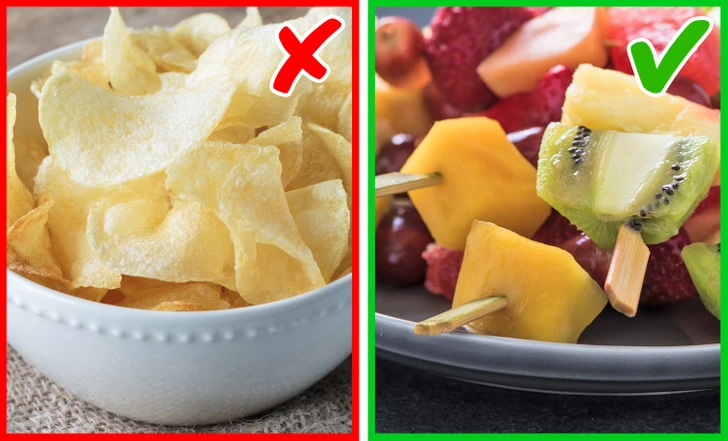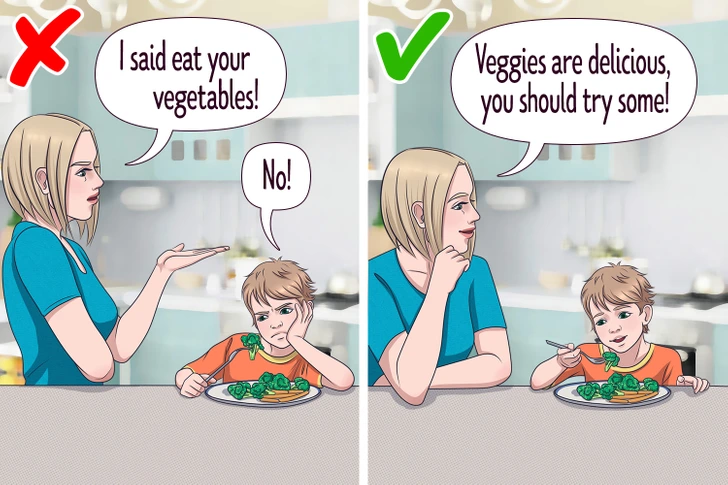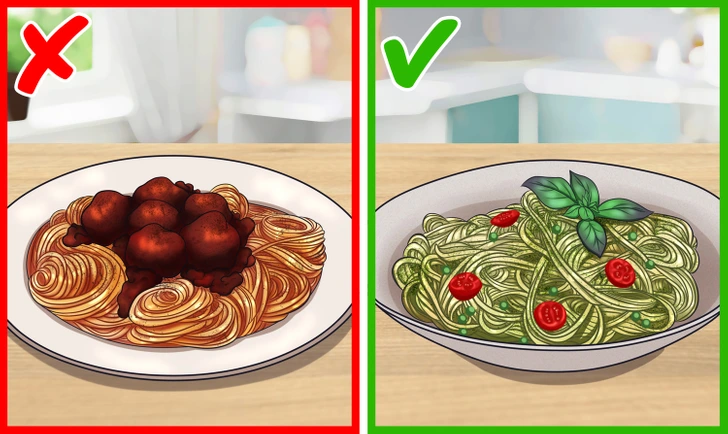By 2030, the global count of obese children is projected to hit 250 million—an alarming statistic highlighting the challenge of encouraging healthy eating, especially with picky eaters among kids. Small strategies like these can be incredibly helpful in navigating this hurdle.
1. Create healthier adaptations of their favorite dishes or snacks.

Frequent consumption of junk food can be tempting but has been linked to reduced academic performance in children. To address this, consider modifying your kids’ favorite less healthy meals by incorporating alternative or additional ingredients.
2. Transform food by shaping and sizing it into playful and engaging forms:

Kids are often more enthusiastic about eating when their meals are presented in playful shapes like animals, cartoons, numbers, letters, or even dinosaurs. A visually appealing meal can captivate children’s attention and encourage them to enjoy their food.
3. Get inspiration from their favorite TV shows and movie characters:

Numerous parents express concern about the potential negative impact of TV, movies, and video games on their children’s health. Nevertheless, a study revealed that when kids view cartoons advocating healthy eating, they tend to make improved food choices. Thus, it’s advisable to monitor your kids’ TV selections closely.
4. Engage them in cooking activities and during grocery shopping trips:

Research indicates that children are more inclined to sample foods they’ve had a hand in preparing. Engaging them in cooking fosters healthier eating habits and promotes exploration of new foods. Additionally, bringing toddlers along to the supermarket can be both educational and enjoyable for them.
5. Make healthy snacks easily accessible:

Frequently, when kids return home from school or sports activities, they’re eager for a snack. This presents a wonderful chance to offer them a healthy option readily available. Consider having choices like fresh fruit or sliced carrots on hand for them to easily snack on.
6. Incorporate vegetables stealthily into their me:

Blend vegetables into smoothies or finely dice them to incorporate into their preferred dishes. While this tactic can be helpful, it’s valuable to communicate to kids the importance of vegetables in our diet, emphasising their role in maintaining a healthy body and the need to consume them regularly.
7. Promote the benefits of nutritious ingredients in a positive manner:

Children absorb cues from their parents, teachers, siblings, and media, presenting an opportunity to leverage these influences when it comes to food. Typically, they respond better to phrases like “This is delicious” compared to the approach of “eat this because it’s good for you.”
8. Combine something they enjoy with something less favoured:

This simple strategy involves serving disliked foods alongside their favorites. Studies suggest that pairing vegetables with beloved dishes is an effective method to introduce veggies, particularly for picky eaters.
By incorporating these strategies into daily routines, parents can gradually instill lifelong healthy eating habits in their children, promoting not only physical well-being but also a positive relationship with food.










